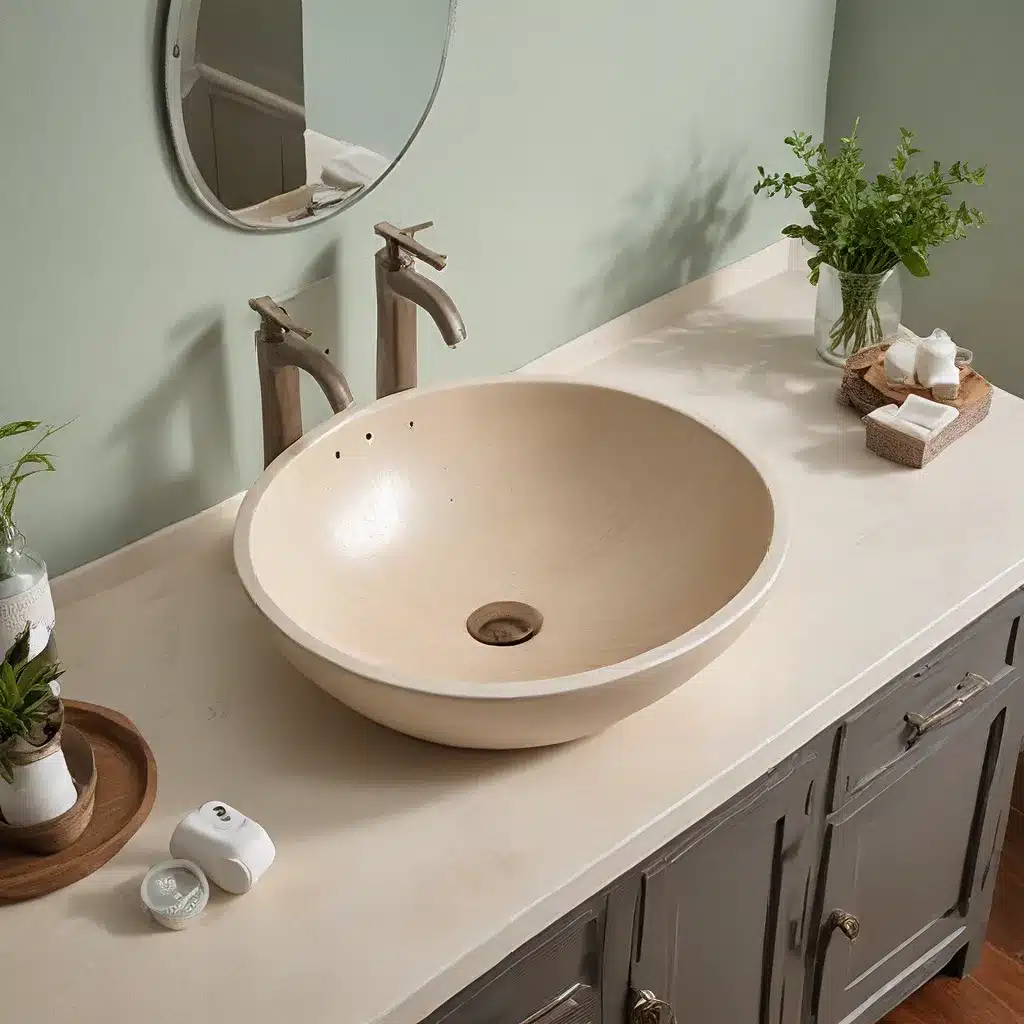
As homeowners and design enthusiasts increasingly prioritize sustainability and environmental consciousness, the humble washbasin has emerged as a key player in the quest for greener bathrooms. Washbasins, often the centerpiece of any bathroom, hold the power to transform the way we interact with water, ultimately shaping the footprint of our most personal spaces.
Embracing Eco-Friendly Washbasin Designs
In the pursuit of water-conscious bathrooms, eco-friendly washbasin designs have taken center stage. These innovative solutions not only cater to aesthetic preferences but also deliver tangible environmental benefits.
Low-flow faucets and water-efficient showerheads have long been the hallmarks of sustainable bathroom fixtures, but the washbasin itself is now commanding attention. Sleek, minimalist undermount sinks and space-saving wall-mounted options can significantly reduce water consumption compared to their traditional counterparts.
Homeowners seeking to make a bold statement can explore vessel sinks, which sit atop the vanity, creating a striking visual focal point while minimizing the basin’s footprint. These design-forward fixtures often feature natural materials like stone, wood, or recycled glass, further emphasizing the home’s commitment to sustainability.
Choosing the Right Washbasin Material
The material selection for a washbasin can profoundly impact its environmental impact and long-term performance. As homeowners and designers become more discerning, certain materials have emerged as clear favorites in the pursuit of eco-friendly bathrooms.
Porcelain and ceramic washbasins have long been industry staples, prized for their durability, easy maintenance, and wide range of design options. These materials are often produced using renewable resources and can be easily recycled at the end of their lifecycle.
For those seeking a more natural aesthetic, stone washbasins, such as granite, marble, or soapstone, offer a timeless appeal while boasting impressive longevity. These materials, when sourced responsibly, can contribute to a bathroom’s overall sustainable footprint.
Recycled glass and reclaimed wood washbasins have also gained popularity, as they repurpose existing materials and reduce waste. These unique options not only showcase the homeowner’s commitment to sustainability but also add a distinct character to the space.
When evaluating washbasin materials, it’s essential to consider factors such as:
- Water-efficiency: The basin’s shape, size, and flow rate can impact water consumption.
- Durability: Selecting a material that can withstand daily use and resist damage is crucial for long-term sustainability.
- Maintenance: Low-maintenance options that require minimal cleaning products or harsh chemicals are preferable for eco-conscious homeowners.
- Recyclability: At the end of the basin’s lifespan, the ability to recycle or repurpose the material is an important consideration.
By carefully weighing these factors, homeowners and designers can make informed decisions that align with their sustainability goals.
Sustainable Washbasin Installation and Maintenance
Proper installation and maintenance of eco-friendly washbasins are essential for maximizing their water-saving potential and extending their lifespan.
Choosing low-flow faucets and water-efficient showerheads to pair with the washbasin can significantly reduce water usage throughout the bathroom. Additionally, leak-free plumbing and properly sealed fixtures help prevent unnecessary water waste.
When it comes to maintenance, eco-friendly cleaning products that are free of harsh chemicals can keep the washbasin looking its best without compromising the environment. Natural, plant-based cleaners and zero-waste refill options are increasingly popular choices among sustainability-minded homeowners.
Regular inspections and proactive maintenance can also extend the lifespan of a washbasin, reducing the need for premature replacement and the associated environmental impact. Simple tasks, such as wiping down surfaces, addressing minor cracks or chips, and ensuring proper drainage, can go a long way in preserving the basin’s condition.
By prioritizing sustainable installation and maintenance practices, homeowners can maximize the eco-friendly benefits of their washbasin and contribute to the overall water-conscious transformation of their bathroom.
Integrating Washbasins into a Holistic Eco-Friendly Bathroom
While the washbasin is a crucial component, a truly water-conscious bathroom requires a holistic approach that considers the entire space. Integrating eco-friendly washbasins with other sustainable bathroom features can amplify the positive impact on the environment.
Strategies such aswater harvesting, greywater recycling, and energy-efficient lighting and appliances can work in tandem with the washbasin to create a bathroom that is both aesthetically pleasing and environmentally responsible.
Homeowners can also explore native landscaping and drought-tolerant plantings around the bathroom to further reduce water consumption and support local ecosystems. By adopting a holistic approach, the bathroom can become a shining example of sustainable living and a testament to the homeowner’s commitment to water conservation.
Conclusion: Embracing the Future of Eco-Conscious Bathrooms
As the demand for water-conscious living continues to grow, the washbasin has emerged as a crucial component in the quest for greener bathrooms. By embracing eco-friendly washbasin designs, carefully selecting sustainable materials, and implementing proper installation and maintenance practices, homeowners can make a tangible impact on their water footprint and contribute to a more sustainable future.
Ultimately, the washbasin serves as a powerful symbol of the homeowner’s commitment to environmental stewardship, inspiring others to rethink their bathroom habits and join the movement towards a more water-conscious society. By visiting Washbasin Factory, homeowners and designers can explore a wide range of eco-friendly washbasin options and take the first step towards crafting a truly water-conscious bathroom.

